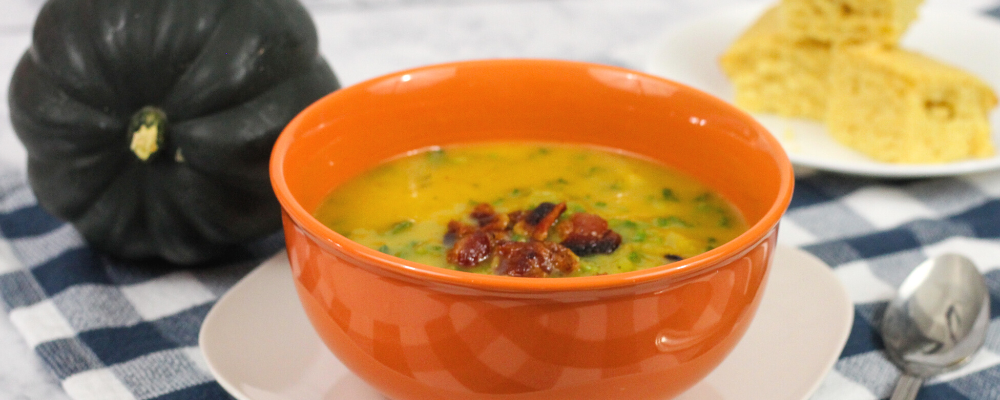
It’s Soup Time!
— By Patty Neal, UMaine Dietetic Intern and Kate Yerxa, Extension Educator
‘Tis the season to enjoy a hot bowl of soup or stew! What is the difference between a soup and a stew anyways? Technically it depends on the base and cooking times. Soup usually has a thin liquid base and cooks in 30 minutes or less, and the soup ingredients are immersed in the liquid base. Stews, on the other hand, have a thick liquid base, can take hours to cook, and the ingredients are not immersed in the stew base. Both soups and stews can have the same ingredients, usually cut up in assorted sizes. Think of chicken noodle soup compared to beef stew.
How healthy is soup?
Although soups can be high in sodium, you can lower the sodium content by using low-sodium or no-added-sodium foods. Excess sodium is typically found in broth, beans, or vegetables. You can drain and rinse the canned vegetables and beans. You can also use a variety of fresh vegetables and homemade broths to reduce the sodium level.
When you make your own soup you control the amount of fat, sodium, and other ingredients that are used. Here are a few tips for making your own healthy soup:
- Choose a variety of vegetables, such as carrots, broccoli, and green beans.
- Choose a liquid like low-sodium chicken or vegetable broth. You can also use a can of no salt-added crushed tomatoes and add water.
- Make sure to choose a lean protein, such as cooked beans, or cooked meat like chicken or ground beef.
- Choose whole-grain rice, pasta, or heartier vegetables such as diced potatoes.
- Do not forget to choose the dried or fresh herbs seasonings. If using fresh herbs, add them near the end of the cooking time.
What to do with the leftover soup?
Whether it is from a can or homemade, food safety is important. Proper storage will help to reduce foodborne illnesses. To keep your food safe to eat, follow the 2-hour rule. Refrigerator foods should not stay out at room temperature for more than two hours. During the summer months, if the temperature is 90° F or above, the food needs to be placed in the refrigerator within an hour after preparation.
For a large pot of soup or stew that is still hot, divide the soup into smaller containers before putting it in the refrigerator or freezer so it can cool down faster. Put your leftover soup in an airtight container or sealed bag in the refrigerator or the freezer. Soups and stews can be stored in the refrigerator for 3 to 4 days. In the freezer, it can be stored for 2 to 3 months.
Later when you want to heat up a bowl, make sure to heat it to 165° F or above. If you are taking it out of the freezer, thaw it in the refrigerator before reheating it.
For recipe ideas for your next soup, try some of our favorite UMaine Cooperative Extension EFNEP soup and stew recipes.
Resources:
- Are You Storing Food Safely? (FDA)
- Freezing & Food Safety (USDA)
- Make Your Own: Soup (UMaine Cooperative Extension)
- Refrigeration & Food Safety (USDA)
- Sodium in your diet (USDA)
